Whispers of the Himalayas: Manasi’s Journey Through Ladakh
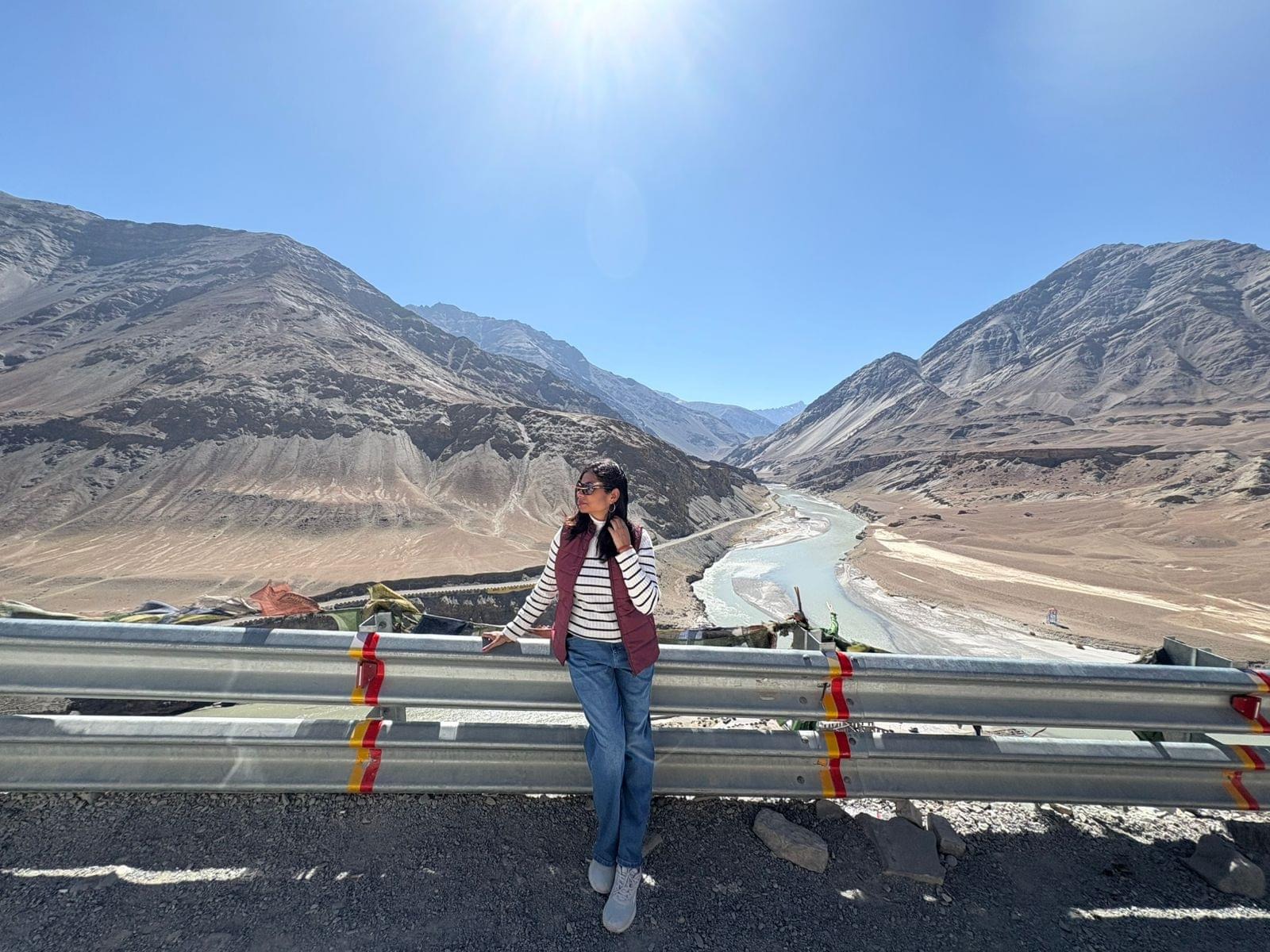
When Manasi Mishra stepped out of the small aircraft at Kushok Bakula Rimpochee Airport, the cold air touched her face like a quiet revelation. The light was softer here, the mountains vast and still, their shadows falling over Leh like ancient guardians. After months of routine and noise, she had finally given herself permission to slow down. This trip, planned through Thrillophilia, promised more than a change of place. It promised a change of rhythm.
Her first day in Leh unfolded gently, as if the city itself was testing her patience. The altitude made each breath deliberate, as though the air demanded respect. After checking into her modest hotel, she spent the afternoon wandering through narrow lanes that smelled faintly of butter tea and sun-warmed stone. The curfew had closed the Leh Palace, but the Shanti Stupa stood open, white and wide against the sky. From its height, she watched the sun sink behind the mountains, bathing the city in gold. Down in Leh Market, the stalls buzzed softly under hanging lights, and she bought a small turquoise pendant from a woman who smiled without needing words. That night, wrapped in a blanket, she watched the stars through her window, stars so sharp and close they felt almost within reach.
The next morning began early with the hum of engines and the promise of the Sham Valley. The road curved and climbed through a land that seemed untouched by time. Her driver, Dorje, spoke little but smiled often, pointing out cliffs shaped like frozen waves and monasteries clinging to impossible ledges. At Sangam, where the Zanskar and Indus Rivers met, the water ran in two distinct shades, olive and blue, before folding into each other. She stood there for a long time, listening to the wind carry prayers from distant gompas.
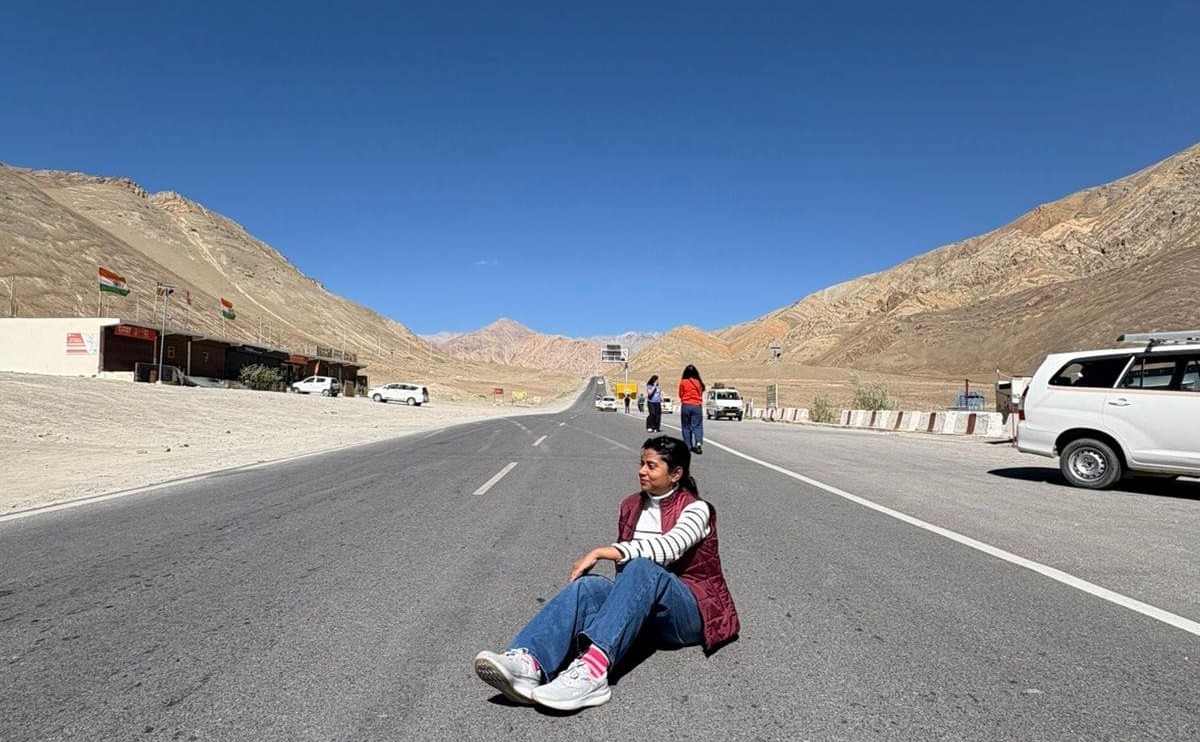
Magnetic Hill followed, a stretch of road where cars seemed to defy gravity. Manasi laughed when her driver let the vehicle roll upward, her disbelief giving way to childlike wonder. At Gurudwara Pathar Sahib, she covered her head and stepped inside, inhaling the scent of ghee lamps and warm langar. Later, she wandered through the Hall of Fame, her eyes tracing photographs of soldiers who had never returned but had never been forgotten either.
That evening, as the car rolled back into Leh, rain began to fall in thin silver lines. The curfew still lingered, some places remained closed, yet Leh Market reopened just in time. She returned, drawn again by its rhythm, and tasted thukpa at a small café. She did not speak the language, but the warmth of shared laughter over steaming bowls of noodles bridged every gap.
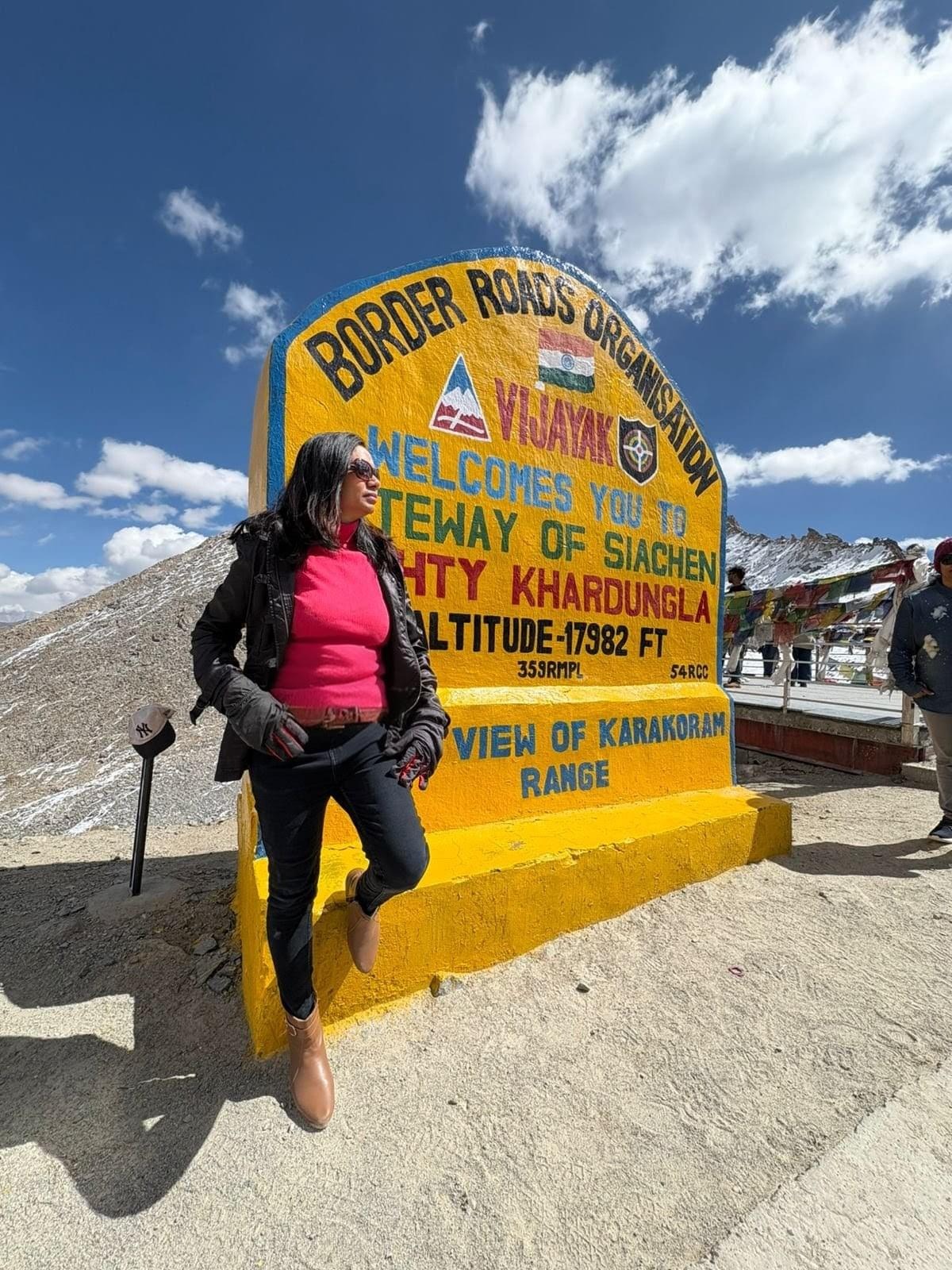
The third day carried her to Nubra Valley through Khardung La Pass, where the road rose like a challenge to the sky. The world outside the window turned sharper, more rugged. Prayer flags fluttered at the pass, snapping against the cold wind. She stopped at the Khardung La café, holding a cup of tea that steamed in the thin air, and smiled at the simple joy of eating Maggi noodles at nearly eighteen thousand feet. The driver told her that here, even boiling water takes longer, time itself slows down.
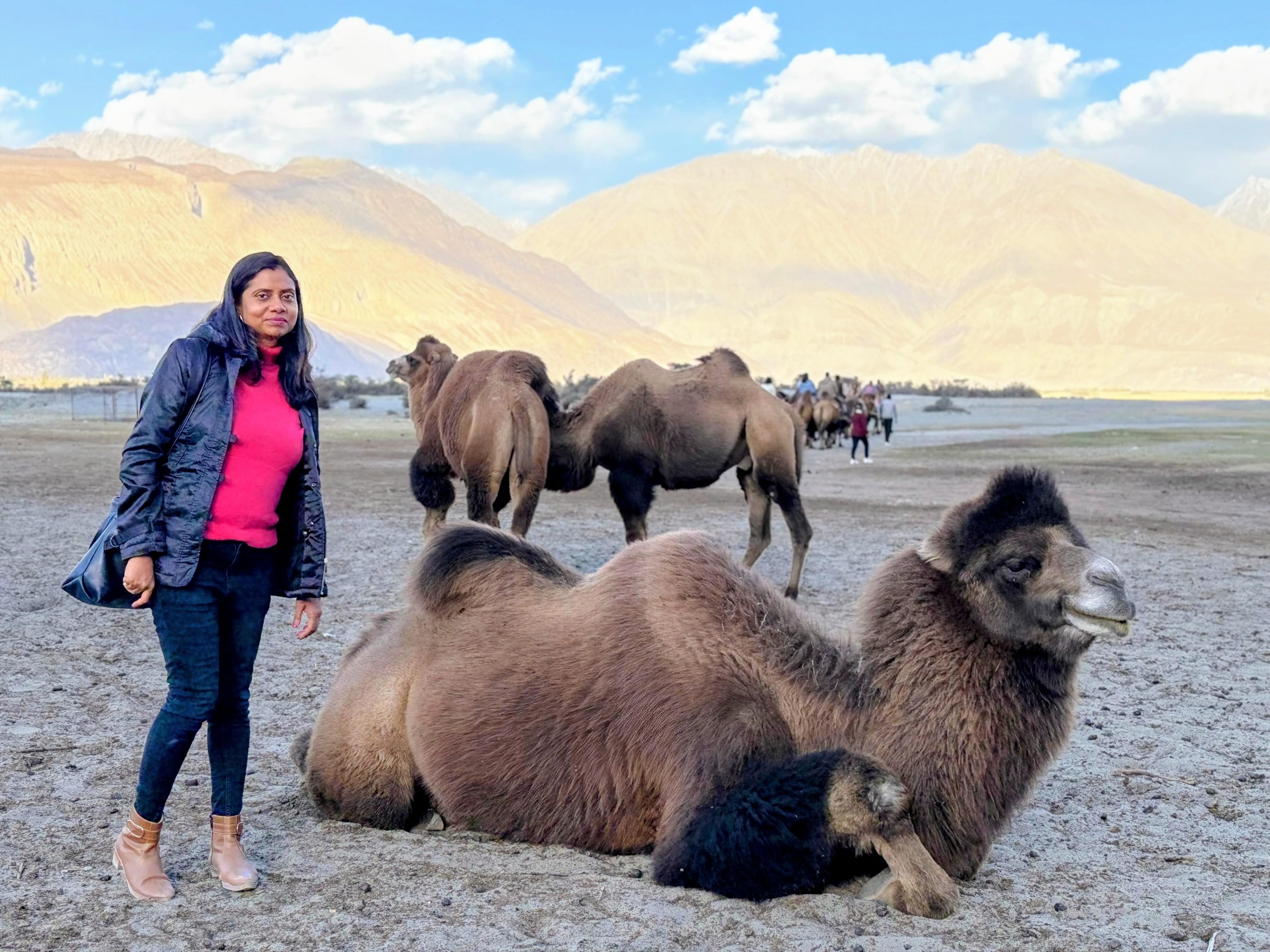
By afternoon, the desert of Hunder opened before her, a spread of silver sand against black mountains. At the Diskit Monastery, the towering statue of Maitreya Buddha faced the valley in quiet grace. Below, camels with twin humps waited at the dunes. She rode one briefly, laughing at its awkward gait, and later watched the sunset cast the dunes in shades of rose and amber. That night, she stayed in a simple camp, where the generator hummed like a distant lullaby and the cold slipped quietly through the canvas. There was no Wi-Fi, no signal, only the sound of the wind circling the tents. She did not miss the world she had left behind.
Morning arrived with the long road to Pangong Tso. The landscape unfolded in layers, barren cliffs, sudden green patches, and small Shyok villages where children waved as the car passed. The journey was tiring, the road rough and unpredictable. Once, the vehicle stalled midway near a stream crossing. For a brief moment, silence settled in and uncertainty flickered. But Dorje stepped out, adjusted the fuel line, and soon the engine sputtered back to life. Manasi smiled in relief, the small hiccup already turning into a story she would one day tell with fondness.
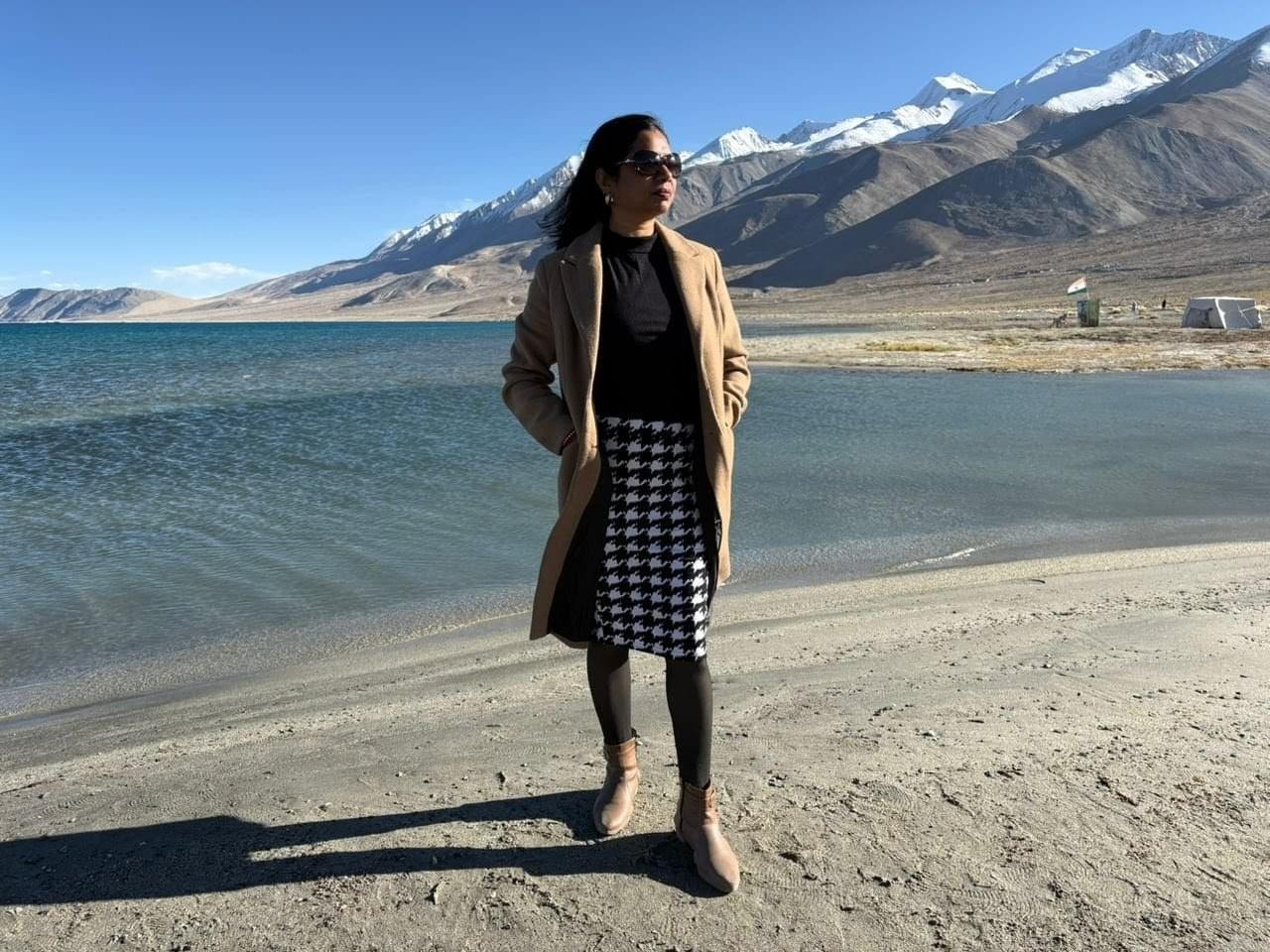
By late afternoon, Pangong revealed itself, an expanse of liquid light framed by peaks. The lake changed colours with every passing minute, azure, turquoise, sapphire, each hue shifting with the wind. She walked along the shore, her boots crunching over pebbles smoothed by time. The air was crisp, and the silence felt almost sacred. Her camp stood close enough to the water to hear the soft lap of waves at night. Dinner was simple, dal, rice, and stories from other travellers. She met a couple from Kerala who spoke about their love for high-altitude lakes, and for a while, strangers became companions under the same sky.
At dawn, she stepped outside to see the first light spill across Pangong. The mountains caught fire in shades of orange and rose, and the lake mirrored the sky perfectly. She did not take a photo. Some sights, she thought, were meant to live only in memory.
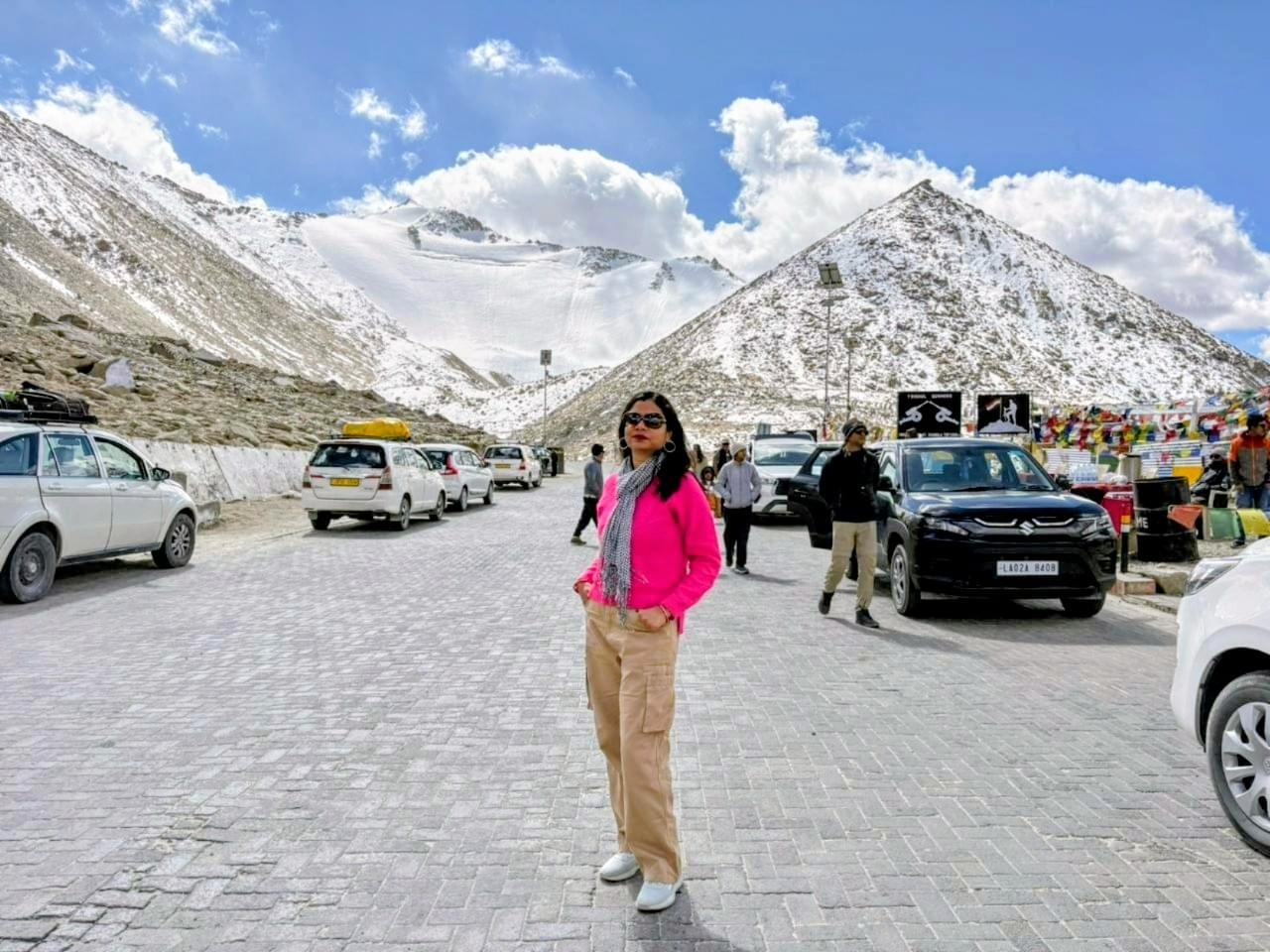
The next day’s drive back to Leh led her through the Chang La Pass. Snow lined the edges of the road, and a faint chill crept in through the car windows. She stopped briefly at the Chang La Baba temple, a small structure draped in flags that fluttered like whispered blessings. Further down, she visited the Druk Padma Karpo School, the same one from the film 3 Idiots. The children’s laughter filled the courtyard, their voices echoing through the crisp air. At Thiksey Monastery, she climbed stone steps that wound around whitewashed walls, pausing at every turn to breathe in the scent of incense. Inside, a massive statue of the Maitreya Buddha sat in quiet contemplation. She stood before it, feeling both small and grounded at once.
By evening, Leh welcomed her again. The curfew had lifted, and the town was alive with the hum of travellers and locals alike. She finally managed to visit the Hall of Fame again, and this time she stayed longer, reading letters, tracing names, thinking about courage in all its quiet forms.
On her last night, she sat by her window, looking out at the distant ridges glowing under a half-moon. The trip had not been luxurious. Comfort here was different, more honest. Her stays were clean, the food simple, and the hospitality warm. Every inconvenience, the cold water, the patchy power, felt like part of the landscape’s truth. She realised how small discomforts often guard the doorway to great beauty.
The morning of departure came softly. The car ride to the airport was quiet, Leh was still waking up. Manasi looked once more at the peaks fading in the mirror, feeling a tug between gratitude and longing. The trip had been more than a journey through mountains. It was a return to stillness, a lesson in how the simplest places can hold the deepest peace.
Back home, when people asked her about Ladakh, she never tried to describe it completely. Words could never carry the light that danced over Pangong or the hush that wrapped Nubra’s dunes. All she said was, “It changes you,” and in her voice, there was both awe and affection.
Thrillophilia, she often told friends later, had helped her see Ladakh not just as a traveller but as a listener, to the land, to its silences, and to herself.
Read More: Thrillophilia Ladakh Reviews